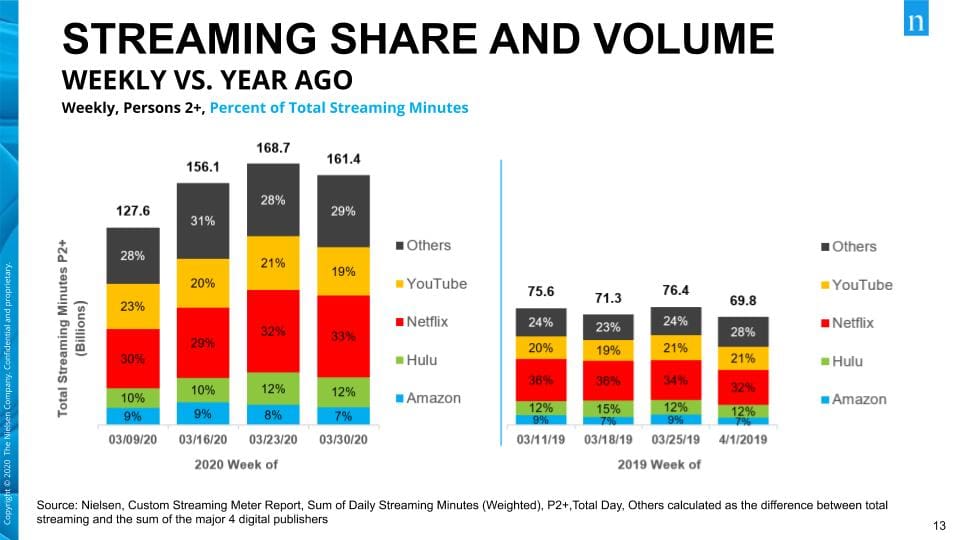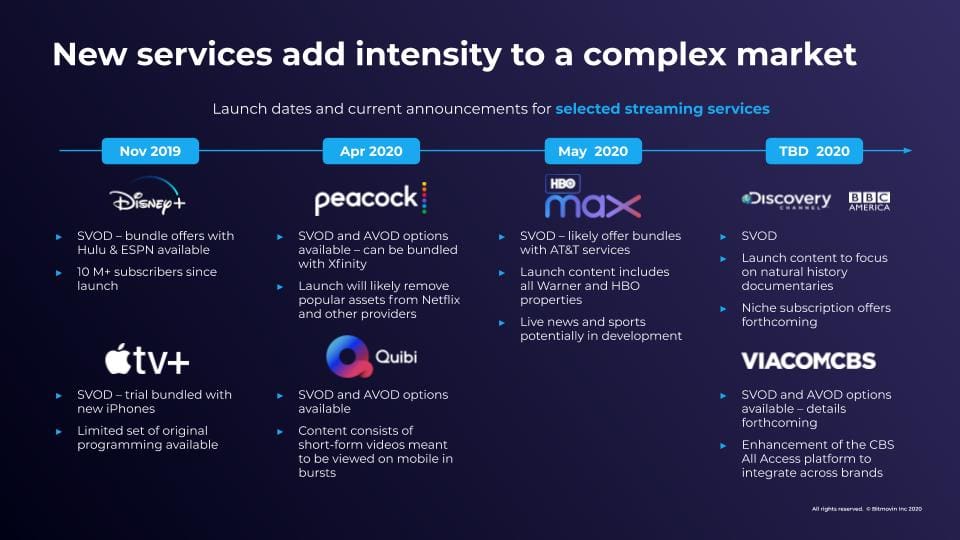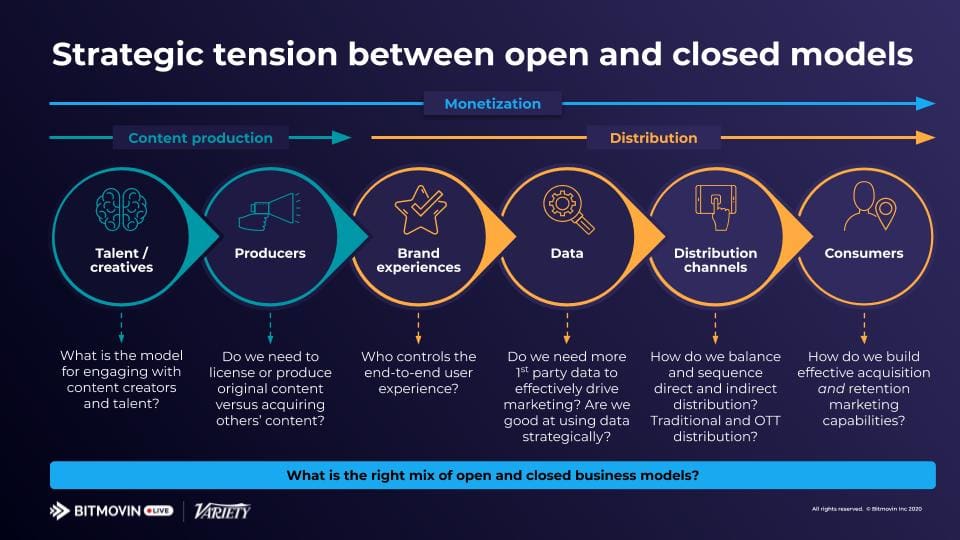This post is a follow-up to our Video Technology Trends 2020 blog post from early February. View the original post here
The early months of 2020 have quickly faded into a blur behind the reality-shattering global crisis that was (and continues to be) the COVID-19 pandemic. In January, very few individuals would have predicted how our entire economy and work structures would change – even fewer individuals predicted how a crisis as this would affect the streaming industry. Not to say that Bitmovin predicted the shift in streaming media, but in early January we took the stance that the streaming industry was set to move towards a certain set of video technology trends: Improving Viewer Experience, Decreasing Time-to-Market for app/platform and content releases, Optimizing Operations to yield better overall ROI.
Little did we know how relevant these particular video technology trends would be in the coming months. With global stay-at-home orders and unprecedented growth in unemployment, the streaming industry came under the spotlight as a solution for filling in empty days and giving viewers a lens into the world outside of their homes.
Accelerated growth in consumption
According to Nielsen, the number of streaming minutes consumed in March by households of two or more people more than doubled from 2019 – and while this number is heavily influenced by standard growth in the industry, growth at this level was never expected, especially by governments and content distributors.

These numbers were further supported when looking at aggregated data across Bitmovin’s global customer base – indicating that total video plays increased by 118% and total downloaded data (GB) increased by over 380%.

While most in the streaming industry would consider this uptick in usage a positive – the reality is, this shift resulted in many reactive distribution adjustments with yet to be seen longer-term results; for example, HBO & Universal releasing either content for free or skipping theatrical release in favor of on-demand content to grab additional viewers. Viewer Experience was one of the first things to suffer from the massive increase in demand as bitrate expenditure was reduced and some content was delayed from release.
Viewer experience suffers
Broadly speaking, viewer experience can be interpreted differently across the industry, from the type of content to resolution level to user interfaces to a video player’s performance. As such, it remains a trend as all video distributors will aim to keep up with the latest in technology (4K, 8K resolution TVs, HDR, Dolby Vision) and with high-quality content to both gain and retain new consumers.
During COVID-19 viewer experience suffered (temporarily) from increased consumption numbers, thereby forcing organizations to reconsider how they deliver content. Even companies as large as Netflix had to adjust to the new norm by limiting resolution during hours of peak bandwidth. Other negative impacts to viewer experience include content production and release delays as well as an increase in startup time and a general decrease in download speed.

Bitmovin saw the effects of increasing viewer figures in the data from across our Analytics customer base. The download speed for downloading video segments decreased by 15% and viewers had to wait 30% longer for the videos to start. The shift towards lower quality videos is a result of less bandwidth available- companies that didn’t reduce bitrate expenditure were the ones who saw the consequences with higher start-up times. Companies able to implement solutions like multi-pass encoding and multi-codec applications will overcome these challenges with reduced bitrate expenditures
New market conditions demand even faster releases
Now that streaming is so highly sought after, businesses need to launch faster to capture audiences and to grab a piece of the market share owned by the big players (Netflix, Disney+, Hulu, Amazon Prime Video, YouTube). Disney+ showed that it’s possible to break into the saturated streaming market, but also proved that apps and services need to launch fast, be available cross-platform and with the right content to succeed.
When it comes to content, it needs to be brought online faster to succeed – consider Trolls World Tour from Universal skipping theatrical release altogether and reaping the benefits of great financial success. News, shows, and critical events need to be online as soon as possible to monetize content in the most effective way – fast encoding offers near-instant turnaround time in the highest quality.

Highly funded services like Quibi, Peacock, and HBO Max are all slated to launch over the course of 2020 – so where does your organization stand? If your business has a single specific device focus – the question you should be considering is not “If I should reach more devices?” rather “WHEN will I reach more devices?” Will it be too late to launch in a too saturated market?
Operational optimization is a MUST HAVE
Our original assessment was that no trend stood above the others in terms of importance. But the COVID-19 pandemic has quickly vaulted Operational Optimization to the most valuable video technology trend. Organizations that are not able to appropriately evaluate their metrics and adjust their strategies will fail – and fast. Quibi might be one of the key examples of an operation failing due to a lack of diversity and the ability to shift. Quibi was effectively designed for the pre-COVID world where mobile content ruled consumption. Unfortunately, with so many people now working from home (or unemployed), content consumption has returned to larger devices and the demand for quick mobile content declined at an unprecedented rate, thus leaving Quibi undownloaded and nearly forgotten.
Although Quibi was never in a position to succeed in the coronavirus era, that’s in large part due to the app build and content type, a factor that’s very difficult to adjust or optimize post-launch. There are multiple adjustments that your business can make when the target audience and devices are more diverse. Now, more than ever, bitrate expenditure (bandwidth capacity), budget, and reach need to be evaluated under scrutiny and optimized for best subjective performance.
One of the biggest ways you can save on costs is by implementing a variation of multi-pass encodings and codec types. These adjustments will save you on CDN costs and dramatically increase your organization’s device reach.
Using video technology to bounce back
According to Janet Balis, Global Advisory Leader for Media & Entertainment at EY:
“You need to gather a lot more data to determine how the core of your organization will drive the decisions for distribution models to drive top-line revenue. You have to now consider the best option for your specific organization between SVOD (subscription), AVOD (advertising), traditional distribution as viewer metrics will continue to change and evolve.”

When looking towards the future, there are a lot of changes that organizations within the streaming industry must consider – a lot of it will have to do with data and analytics, cost reduction (Operational Optimization), and strategic market launch decisions (Time-to-Market). As we consider the next steps there are major up and coming industries that must take these trends into consideration, including but not limited to, live-streamed political campaigns, sports teams, and many more!
Did you enjoy this post? Check out some of our other great content:
[Slidedeck] COVID-19 and it’s impact on OTT Video
[Webinar] COVID-19 and it’s impact on OTT Video
[Webinar] Video Tech Trends 2020
[Blog Post] Bitmovin’s Video Top Video Technology Trends 2020




